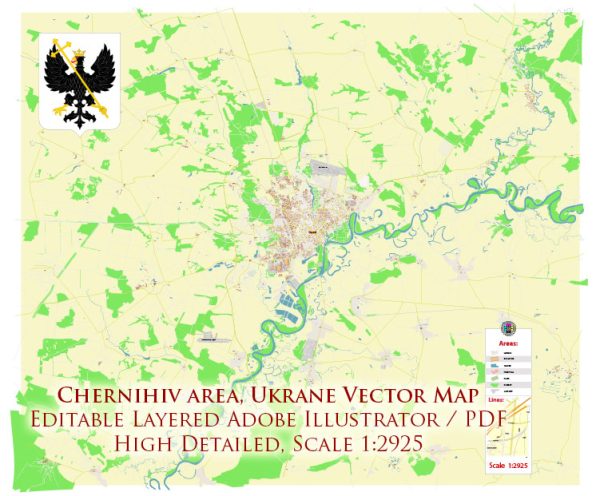Chernihiv, located in northern Ukraine, is one of the oldest and historically significant cities in the country. Its history dates back to ancient times, and it has witnessed numerous changes and developments throughout the centuries.
- Early History:
- Chernihiv’s origins can be traced back to the 9th century when it was part of the Kyivan Rus, a federation of East Slavic tribes. It played a crucial role in the political, cultural, and economic life of the region.
- The city was a center of trade and craftsmanship, and its strategic location on the Desna River contributed to its importance.
- Medieval Period:
- Chernihiv became a major fortress and political center in the medieval period, with numerous churches and monasteries being built during this time.
- The city suffered from various invasions, including those by the Mongols in the 13th century and later by the Grand Duchy of Lithuania and the Polish-Lithuanian Commonwealth.
- Cossack Era:
- In the 17th century, Chernihiv became part of the Cossack Hetmanate. During this period, the city continued to be an important administrative and cultural center.
- The architectural landscape expanded with the construction of churches, including the Transfiguration Cathedral and the Collegium.
- Imperial and Soviet Periods:
- Chernihiv passed through various imperial hands, including Russian, Polish, and Soviet control, which had significant impacts on its development.
- The Soviet era brought industrialization and urban planning to Chernihiv, with the construction of new residential areas, factories, and infrastructure.
- World War II:
- Chernihiv suffered greatly during World War II, with significant damage to its infrastructure and loss of life. The city was occupied by the German forces, leading to the destruction of many historical buildings.
- Post-Soviet Period:
- After the dissolution of the Soviet Union, Chernihiv became part of an independent Ukraine in 1991. The city underwent further changes as it adapted to the new political and economic realities.
- Modern Times:
- Today, Chernihiv is a regional center with a mix of historical and modern elements. The city preserves its rich cultural and architectural heritage, with landmarks like the Chernihiv Collegium and the Trinity Monastery.
- Chernihiv continues to develop economically and culturally, facing the challenges of balancing modernization with the preservation of its historical identity.
Throughout its history, Chernihiv has faced challenges, but its resilience and cultural significance have allowed it to maintain a distinct place in the history and urban development of Ukraine. The city’s architectural ensemble, with its churches, cathedrals, and historic structures, reflects the diverse influences and periods that have shaped Chernihiv over the centuries.


 Author: Kirill Shrayber, Ph.D.
Author: Kirill Shrayber, Ph.D.